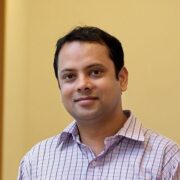

About Joint Entrance Examination (JEE)
JEE stands for the Joint Entrance Examination which is a national-level entrance exam for admission in the field of engineering. Various colleges that accept the result of this exam are IIIT, NIT, IIT, and Government engineering colleges. The exam includes 2 sub-exams namely JEE Mains and JEE Advanced.
IIT JEE History
The first test was conducted in the year 1960. Earlier it was called the Common Entrance Exam (CEE) and was later renamed as JEE.
The year-2010 a proposition was made to replace the JEE which was declined by many universities. Later on, the Joint Admission Board (JAB) made some changes to the exam.
New Admission Norms for IITs
From the year- 2013 the exam was divided into 2 steps JEE Mains and Advanced for the 13 IITS and the Bachelor’s program of ISM Dhanbad. The eligibility criteria for the IITs, NITs, and CFTIs is students should score 75% marks in the 12th examination or should be in the top 20 percentile in the respective board. Though, SC/ST candidates are expected to score at least 65% marks.
What is the frequency of JEE Exam?
JEE is conducted twice a year in two sections:
What is National Testing Agency?
The Ministry of Human Resources Development of the Government of India declared the formation of the National Testing Agency (NTA) in 2018. The NTA is a foremost self-governing, autonomous, and self-supporting test association that aims for honest, competent, and adequate testing. NTA is also accountable for organizing international standard tests to assess applicants’ skills.
Since 2019, it is the liability of the Department of Higher Education, MHRD, and the Government of India (GOI), to conduct JEE (Main) with NTA.
NTA has formulated a chain of test centers over India. The candidates can exercise the “Computer Based Test (CBT)” exam mode. Veteran, fitted, and expert Nodal officers with other staff in the center support and prompt registrants to clarify their difficulties and resolve difficulties in order to grow accustomed to the CBT exam model.
Why normalization?
“Normalization procedure based on Percentile Score” is modified to defeat a situation like the one discussed earlier. It will consequently guarantee that candidates are neither profited nor disadvantaged. The toughness level of the examination or question papers recognizes the candidate’s actual quality.
List of colleges in India
Code of Conduct for Candidates
NTA’s ruling on unfair practices will be obligatory and there will be no agreement.
IIT JEE Syllabus 2021-2022
Following is the syllabus for Physics, Chemistry, Mathematics for JEE.
| S.No. | Syllabus | S.No. | Syllabus |
| 1 | General: Units and dimensions | 1 | Mechanics |
| 2 | Thermal physics | 2 | Electricity and Magnetism |
| 3 | Electromagnetic Induction | 3 | Optics |
| 4 | Wave Nature of light | 4 | Modern Physics |
| 5 | Electronic Devices | 5 | Communication Systems |
Mathematics
Algebra of complex numbers, addition, multiplication, conjugation, polar representation, properties of modulus and principal argument, triangle inequality, cube roots of unity, geometric interpretations.
Quadratic equations with real coefficients, relations between roots and coefficients, formation of quadratic equations with given roots, symmetric functions of roots.
Arithmetic, geometric and harmonic progressions, arithmetic, geometric and harmonic means, sums of finite arithmetic and geometric progressions infinite geometric series, sums of squares and cubes of the first n natural numbers
Logarithms and their properties Sequence & Series Arithmetic & geometric progression insertion of arithmetic, geometric means between two given numbers, Relation between A.M & G.M . Sum up to n terms of special series: Sn, Sn2, Sn3. Arithmetic? geometric progression!
Mathematical Induction Principle of Mathematics Induction & its simple applications.
Permutations and combinations, Binomial theorem for a positive integral index, properties of binomial coefficients.
Matrices as a rectangular array of real numbers, equality of matrices, addition, multiplication by a scalar and product of matrices, transpose of a matrix, Determinant of a square matrix of order up to three, the inverse of a square matrix of order up to three, properties of these matrix operations diagonal, symmetric and skew-symmetric matrices and their properties, solutions of simultaneous linear equations in two or three variables. Addition and multiplication rules of probability, conditional probability, Bayes Theorem, independence of events, computation of probability of events using permutations and combinations.
Statistics Measure of Dispersion. Calculation of mean, median, mode of grouped & ungrouped data calculation of standard deviation, variance, and mean deviation for grouped & ungrouped data.
Trigonometry: Trigonometric identities & functions, their periodicity, and graphs, addition and subtraction formulae, formulae involving multiple and sub-multiple angles, general solution of trigonometric equations. Relations between sides and angles of a triangle, sine rule, cosine rule, half-angle formula and the area of a triangle, inverse trigonometric functions (principal value only).
Analytical Geometry Two dimensions: Cartesian coordinates, the distance between two points, section formulae, a shift of origin. Equation of a straight line in various forms, angle between two lines, the distance of a point from a line. Lines through the point of intersection of two given lines, equation of the bisector of the angle between two lines, concurrency of lines, centroid, orthocentre, incentre, and circumcentre of a triangle
Equation of a circle in various forms, equations of tangent, normal, and chord. Parametric equations of a circle, the intersection of a circle with a straight line or a circle, equation of a circle through the points of intersection of two circles, and those of a circle and a straight line. Equations of a parabola, ellipse, and hyperbola in standard form, their foci, directrices and eccentricity, parametric equations, equations of tangent and normal. Locus Problems.
Three dimensions: Direction cosines and direction ratios, equation of a straight line in space, equation of a plane, a distance of a point from a plane.
Differential Calculus Real valued functions of a real variable, into, onto, and one-to-one functions, sum, difference, product and quotient of two functions, composite functions, absolute value, polynomial, rational, trigonometric, exponential, and logarithmic functions.
Integral Calculus Integration as the inverse process of differentiation, indefinite integrals of standard functions, definite integrals and their properties, application of the Fundamental Theorem of Integral Calculus.
Vectors Addition of vectors, scalar multiplication, scalar products, dot and cross products, scalar triple products, and their geometrical interpretations.
I hope you may find following article helpful.
JEE Main 2021: Expert suggests a new strategy to prepare for exam amid COVID-19 crisis


He is an entrepreneur, a mentor, career counselor, an author and so much more. Alumni of reputed institutes like IIM-Bangalore, Delhi Technical University and among the top 20 of his batch, Mr. Vivek Gupta has almost 20 years of experience.

Satyam is an alumnus of IIM Bangalore ( 2005) and IIT Delhi 2003. He was first runner up at Lead India , an initiative by Times of India to find future impact leaders of India. After a 4 year stint with American Express, Satyam joined Michael and Susal Dell Foundation to take his passion to profession.

Having graduated from Kurukshetra University with a bachelor's degree, she is well-versed in digital marketing. Over the past two years, she has been actively handling and managing various academic responsibilities.

Sameer Mahandru is an alumnus of IIM Bangalore (2004). He has worked with companies like Hindustan Lever, Asian Paints, SABMiller in the Sales & Marketing function for more than 6 years prior to starting operations at Indospirit. Currently he is MD and Chairman of Indospirit Distribution Limited.
Best thing about Vivek Gupta Sir is his selfless counselling. As I am already a BSC/ MSC, he suggested me to go to Philippines as I was able to get straight admission into MD and this finishes my entire course in 4 years flat. In any other country, it would have taken by 5.5-6 years. Ms Kanimojhi in Chennai office of GKWorks was equally supportive in coordination regarding documents, departure and all other formalities.
We live 100 Km’s away from Varanasi. The internet connection in our town is very weak and my parents are not that educated. For us, understanding the word RTGS was also very difficult. Thanks to Amit Pandey Sir, who is Gkworks Varanasi incharge, he helped us to do all small things. Going with us to get forex to helping us doing RTGS for fee payment, he was always there with us. He only helped us to apply for passport online and went with us to passport office Varanasi. Such support at ground level was provided by GKworks team both in Varanasi and Delhi.
My parents were not very comfortable to send me abroad especially my mother as I am the only son of my parents. I really wanted to become a doctor and thus approached Hemant Mishra Sir, director of Bareilly branch of GKWorks. He went out of his way to convince my mother. He would have come 5 times to my home, invited us to his office and home 10 times before my mother was finally convinced. It is only due to Hemant Sir in Bareilly that I am pursuing my course today. I wish GKworks and especially Bareilly branch all the very best to help many more students for their life dreams.
Resume Writing Tips That Can Get You Hired Faster
How to Choose the Right Career Path for a Successful Future